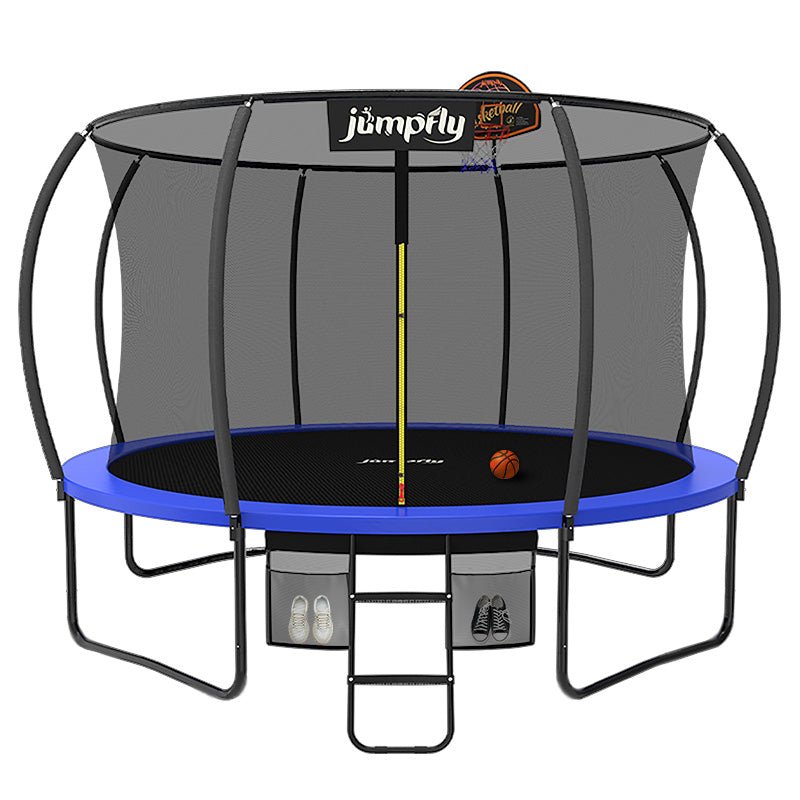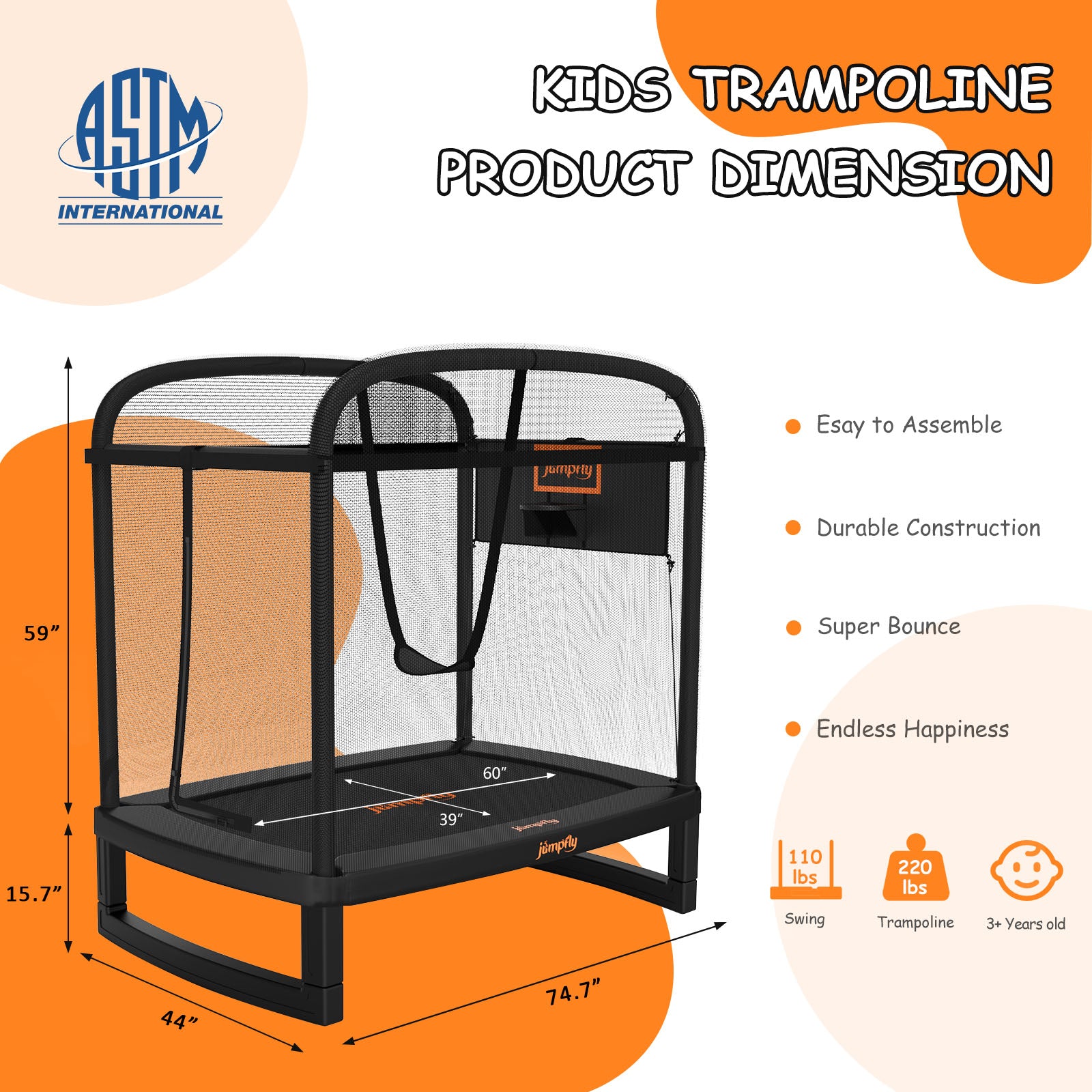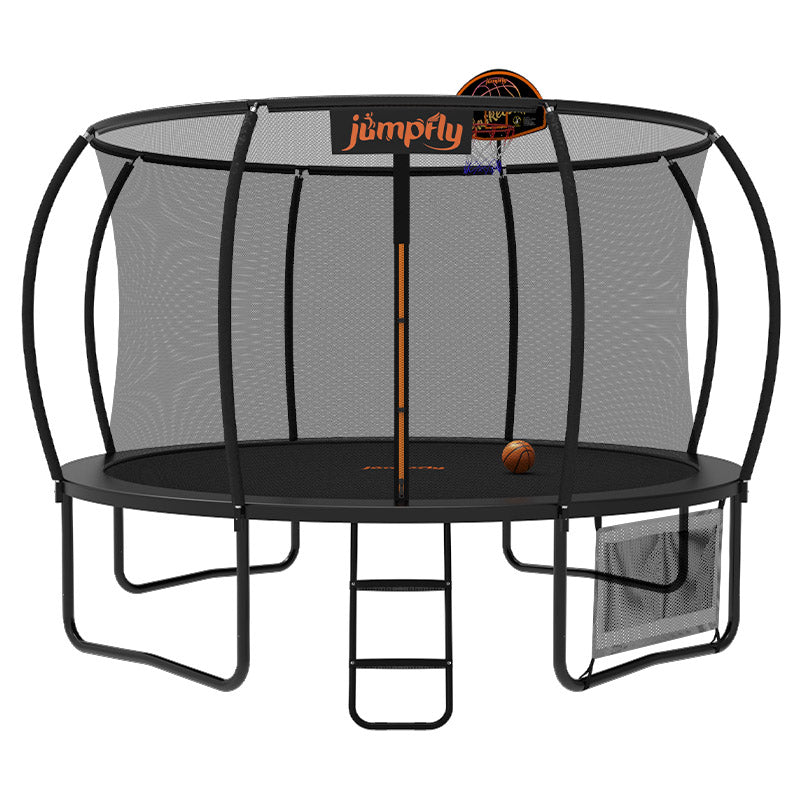Trampolines are a blast for kids and adults alike! They’re a fantastic way to get active, improve coordination, and enjoy the outdoors. But when it comes to setting one up, a common question pops up: Can you put a trampoline on uneven ground?

Let’s explore the factors to consider and precautions to take if you’re facing an uneven terrain situation.
Before You Do This, Factors to Consider:
Level Ground:
Ideally, trampolines belong on a level surface. This ensures stability and safety, reducing the risk of tipping and those awkward, off-balance bounces that can lead to accidents.
Safety Considerations:
Safety is absolutely key when it comes to trampolines. Uneven ground increases the chances of:
- Tipping: The trampoline could tilt, making it easier to fall off.
- Uneven Bouncing: This can throw off balance and lead to falls or collisions with other jumpers.
- Increased Risk of Injury: Ankle sprains, broken bones, and head injuries are more likely on uneven surfaces.
Manufacturers strongly recommend flat surfaces to minimize these risks.
Frame Stress:
Uneven ground puts extra stress on the trampoline’s frame and springs. This uneven pressure can cause the frame to warp over time, leading to:
- Premature Wear and Tear: Springs may wear out faster, and the frame itself could weaken.
- Instability: A warped frame can make the trampoline unstable and unsafe.
- Potential Breakage: In severe cases, the frame could even crack or break.
Precautions for Setting Up a Trampoline on Uneven Ground:
Leveling the Ground:
If you absolutely must place the trampoline on uneven ground, try to level the area first:
- Assess the Slope: If the slope is significant, leveling might not be possible. Small inclines are usually okay to correct.
- Use Compactable Fill: Fill in low spots with gravel or crushed stone, topped with topsoil for a smooth finish. Avoid loose fill like sand.
- Create a Gradual Slope: Aim for a gentle slope away from the trampoline to help with water drainage.
- Use a Leveling Tool: A long level or a laser level will help you ensure the area is flat.
For detailed instructions and advanced leveling techniques, see our guide: How to Professionally Install a Trampoline on Uneven Ground
Use of Platforms:
Some trampoline manufacturers offer platforms designed to create a level base. These platforms:
- Provide Stability: They create a solid and even surface for the trampoline.
- Improve Drainage: Help prevent water from pooling under the trampoline.
Professional Installation:
For tricky or very uneven ground, call in the pros! Professional installers can:
- Assess the Area: They’ll determine if the area is suitable for a trampoline.
- Make Adjustments: They can level the ground or build a retaining wall if needed.
- Ensure Safe Setup: Professionals have the expertise to install the trampoline securely.
Regular Maintenance:
No matter where you place your trampoline, regular maintenance is a must:
- Check for Wear and Tear: Inspect the frame, springs, mat, and safety padding regularly.
- Tighten Loose Components: Keep all nuts and bolts securely tightened.
- Monitor Levelness: Ensure the trampoline remains level over time, as ground can shift.
Why Do People Put Trampolines on Uneven Ground?
Sometimes, a perfectly flat spot just isn’t an option. Here are some common reasons:
Limited Space:
Smaller yards might not have a large enough flat area.
Pre-existing Landscape:
Natural slopes or bumps in the yard.
Temporary Setup:
For events or occasions where a temporary setup is needed.
Lack of Alternatives:
Limited options due to yard size, landscaping, or other structures.
Safety Accessories to Consider
Boost safety with these accessories, especially on uneven ground:
Safety Net Enclosures:
Prevent falls by containing jumpers within the trampoline.
Anchor Kits:
Secure the trampoline to the ground using stakes and straps, preventing it from tipping in high winds or with uneven weight distribution.
Spring Pad:
A thick spring pad is essential to cover the springs and frame, providing extra cushioning in case of falls.
Ladder:
A sturdy ladder helps with safe entry and exit, reducing the risk of slips and falls.
Want to learn more about trampoline safety and setup? Check out our other helpful blog posts or browse our selection of high-quality trampolines!







Leave a comment
All comments are moderated before being published.
This site is protected by hCaptcha and the hCaptcha Privacy Policy and Terms of Service apply.